Germany’s online shoppers in 2025: What they’re doing differently
Written by
Editorial TeamPublished on
What really drives online shoppers in Germany? The new DooFinder study reveals why price is no longer the top priority, how AI and social proof are reshaping buying behavior – and what that means for e-commerce brands. (Ad)
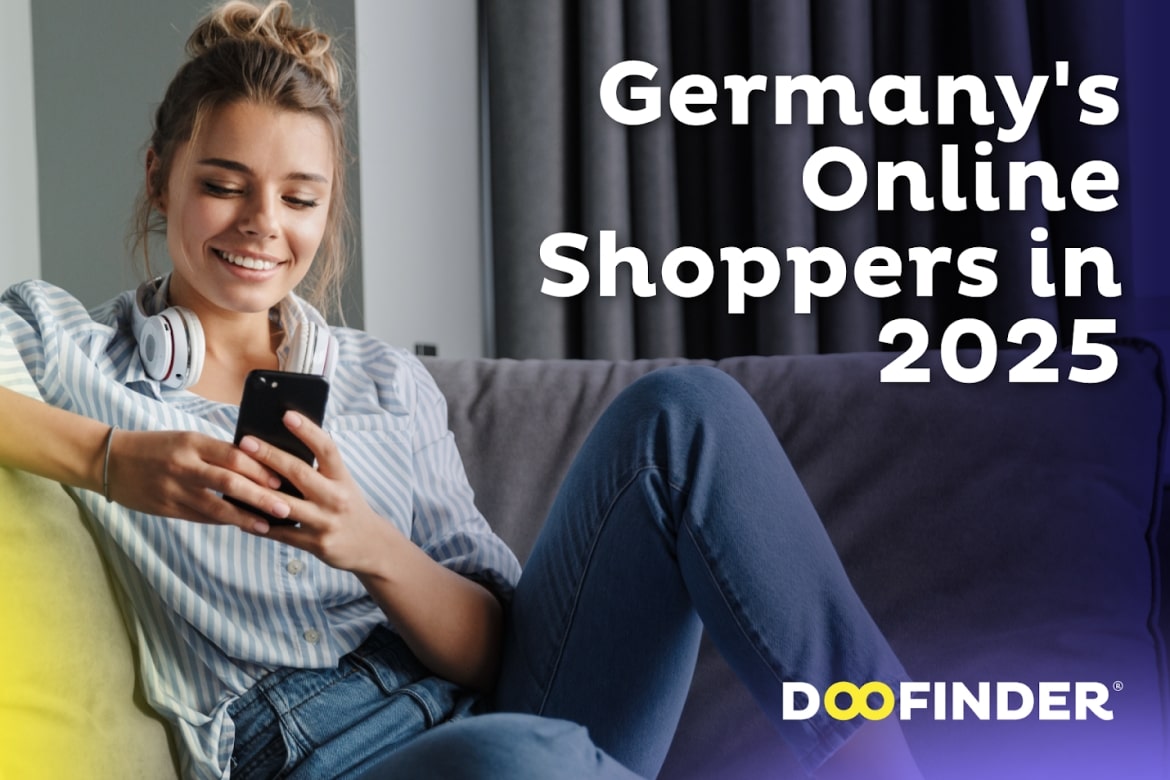
Commercial collaboration
One in four Germans now make nearly all of their purchases online. That’s more than a shift – it’s a sign that eCommerce has fully entered the mainstream. What was once about convenience is now simply how people shop. Whether it’s ordering groceries during a lunch break, comparing products on a phone during the commute, or checking delivery updates while cooking dinner, online shopping has become part of the everyday rhythm.
The 2025 DooFinder Online Consumer Landscape Study, based on data from over 2,000 online shoppers in Germany, confirms it: Germans aren’t just spending more online. They’re also demanding better experiences, rely on smarter tools, and are making faster, more informed purchase decisions.
From the rise of heavy digital-first shoppers to the growing impact of AI and social platforms on purchasing behavior, this year’s research points to five defining trends every eCommerce brand needs to understand – and act on.
The rise of the heavy online shopper
Online shopping in Germany is no longer just convenient – it’s becoming second nature. The average German now spends €90 per month online, above the European average.
At the forefront of this shift is a powerful consumer group: heavy online shoppers. They now make up 25% of the market and do more than two-thirds of their total shopping online. Most of them are Millennials: digital natives with busy lives and a strong preference for efficiency and control.
They shop across nearly every category, fashion, electronics, personal care, books, even groceries. What they want is straightforward: fast delivery, helpful recommendations, a checkout process that doesn’t make them think. If they hit friction – whether that’s clunky UX or poor customer service – they don’t hesitate to leave.
For online stores, this means the bar is higher than ever. If you’re not delivering a smooth, reliable experience, they’ll find someone else who will.
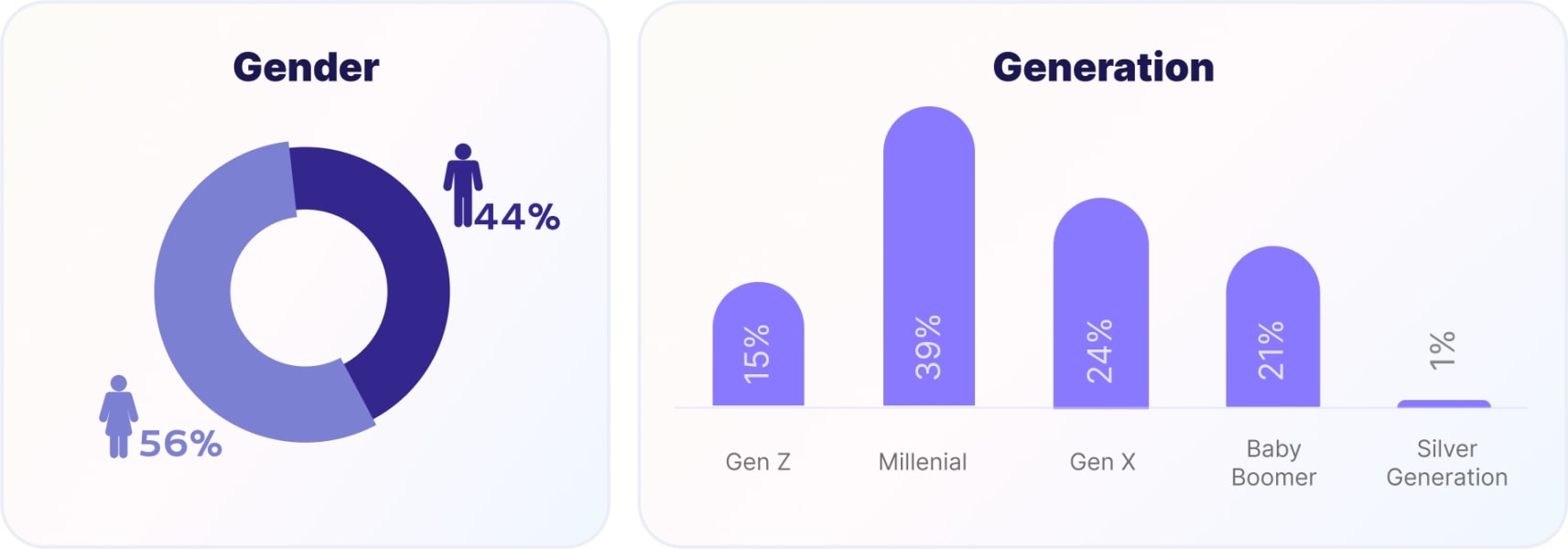
AI adoption is growing fast – especially among millennials
Artificial intelligence isn’t just a buzzword in German eCommerce – it’s already changing how people shop. According to our 2025 study, about 40% of German online shoppers use AI-powered search engines to find products. But even more are using AI tools in other parts of the shopping journey -whether that’s getting personalized product suggestions, chatting with a virtual assistant, or receiving smart notifications about deals or delivery updates.
It’s a higher adoption rate than in many other European countries, and Millennials are leading the way.
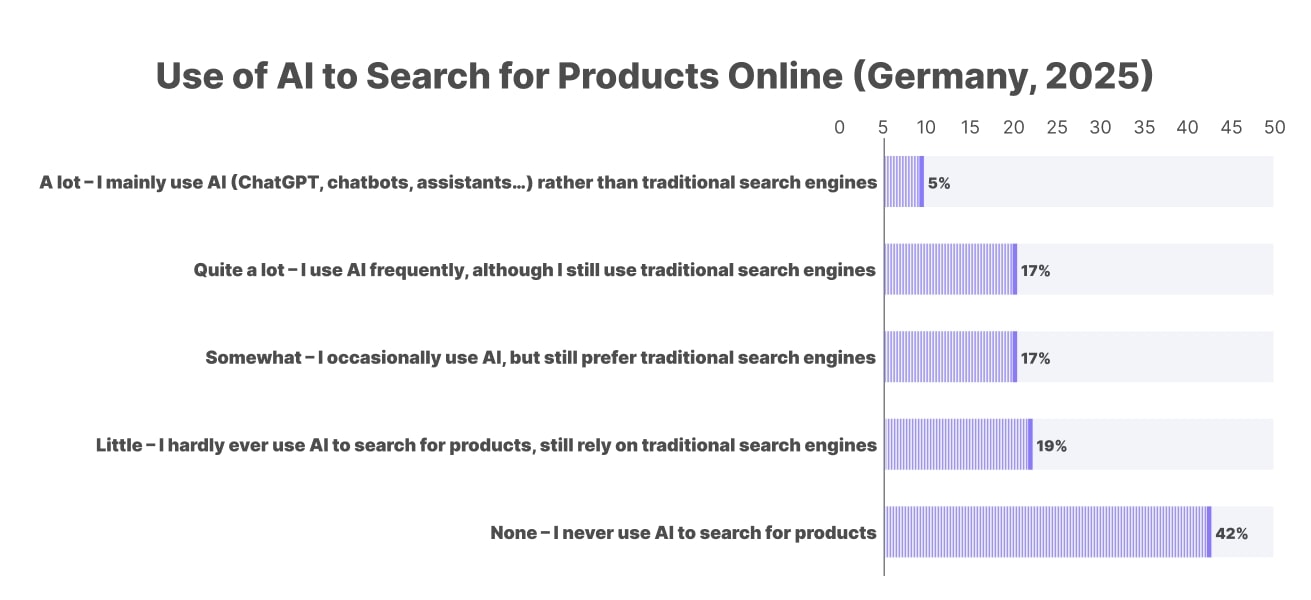
Nonetheless, Gen Z isn’t far behind – they’re using voice tools and AI-powered feeds on TikTok or YouTube. Meanwhile, older generations tend to rely more on traditional search and reviews. For brands, that means different audiences need different digital experiences – and AI can help bridge that gap.
Overall, shoppers of all ages now interact with AI at some point in their online journey – whether they realize it or not. And it’s not just helpful for consumers. According to McKinsey, personalized experiences can boost conversion rates by up to 20%, making AI a powerful tool for both customer satisfaction and revenue growth.
Price matters – but so does the experience
While price remains a key consideration in Germany’s online shopping landscape, it’s no longer the main driver. According to DooFinder’s 2025 data, only 19% of German consumers cite price as their primary reason for shopping online. Instead, factors like home delivery, product variety, ease of comparison, and overall convenience carry more weight.
In fact, 72% of shoppers regularly compare features, and reviews before hitting “buy.” It’s not only about chasing the lowest price, but also about having transparency, control, and confidence in their choice. The shift is clear: today’s shoppers aren’t just bargain-hunters – they’re looking for real value.
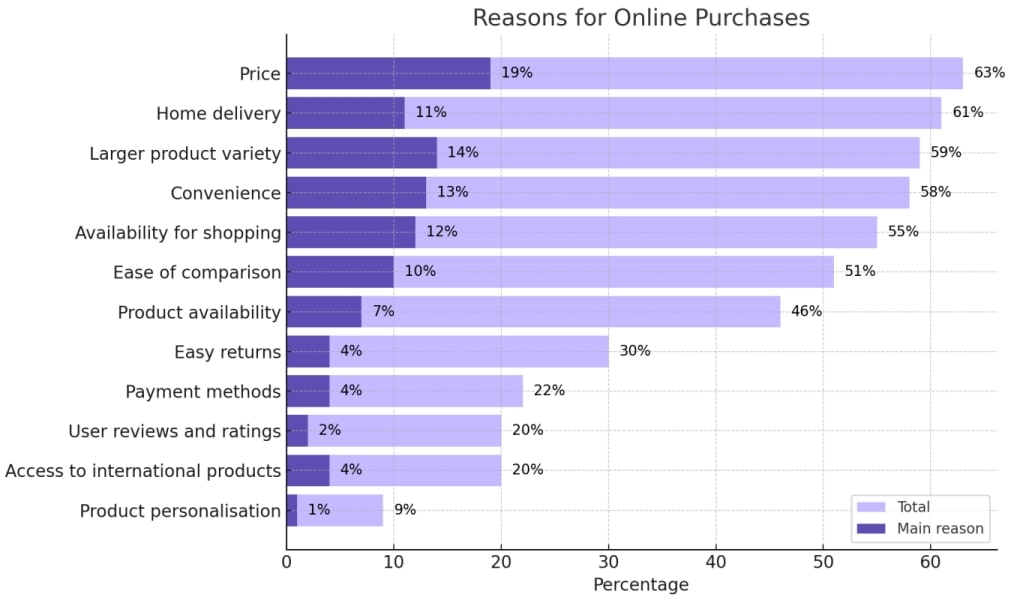
Customer experience now plays a bigger role in driving loyalty. Their expectations are especially high. They want:
- Home delivery that’s fast and reliable (61% say it’s a reason they shop online)
- Larger product variety, giving shoppers more options in one place (59%)
- Convenience and availability, like being able to shop anytime, from anywhere (58% and 55%)
- Easy comparison tools, helping users weigh features, prices, and reviews side by side (51%)
- Clear product availability and return policies, ensuring purchases are smooth and stress-free
If a store doesn’t meet those standards? They’ll leave – without hesitation. In fact, a 2024 PwC report found that one in three online shoppers have stopped interacting with a store after just one poor customer experience.
High intent to spend despite economic caution
Inflation, energy costs, and global uncertainty continue to put pressure on household budgets – but that hasn’t stopped German consumers from shopping online. Actually, the opposite is true: 19% say they plan to spend even more online in 2025, despite the economic pressures.
It’s clear: eCommerce has become part of everyday routines. It gives them more control, helps them plan better, and lets them feel like they’re getting the most for their money. From comparing prices to finding deals (and skipping those in-store impulse buys), shopping online just makes sense right now.

What’s more, the flexibility of online shopping – everything from buy-now-pay-later options to the ability to track spending – makes it an attractive channel even for those watching their budgets. According to a recent GfK report, German consumers are shifting toward “value-for-money” rather than strictly “low price” purchases, favoring products that deliver quality and utility over time.
For brands, the message is clear: don’t let headlines about economic slowdowns distract from real opportunities. Consumers may be cautious – but they’re still spending, and they’re doing it online.
Search and reviews still rule – but social proof is rising
When it comes to making online purchase decisions, search engines and product reviews remain the most trusted sources for German consumers. According to the 2025 Online Consumer Landscape Study, 60% rely on online searches and 53% consult product reviews before buying – making these the most influential touchpoints in the digital journey.
But things are starting to shift, especially with younger shoppers. Gen Z and Millennials are turning more and more to social media, influencers, and even AI assistants to help them decide. Platforms like Instagram, TikTok, and YouTube aren’t just places to scroll anymore – they’re quickly becoming full-on shopping channels.
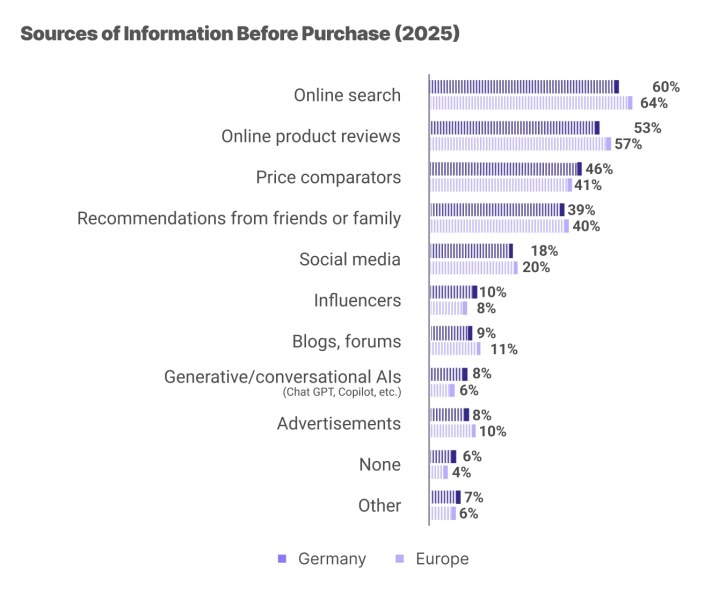
This rising emphasis on social proof – likes, shares, peer recommendations, and creator endorsements – means that digital trust is evolving. Today’s consumers want authenticity as much as authority. They value user-generated content, real-life product demos, and honest feedback over polished ads.
For retailers, this opens the door to new opportunities: from leveraging influencer partnerships and reviews, to integrating social commerce features and showcasing community voices.
Where online shopping is headed next
Online shopping in Germany has entered a new phase – faster, smarter, and more intentional. With one in four consumers doing most of their shopping online, and more turning to AI tools and social platforms to guide their decisions, the rules of engagement are shifting.
Today’s shoppers expect more than just good prices. They want value, relevance, and experiences that feel effortless and trustworthy. And they’re not afraid to move on quickly if a store doesn’t deliver.
For brands, the takeaway is clear: staying competitive means staying tuned in. The future of eCommerce belongs to those who not only follow the trends – but truly understand the people behind them.
Want the full picture? These insights are just the beginning. Download the full 2025 DooFinder Online Consumer Landscape Study to explore shopper profiles, behavioral shifts, and strategic takeaways that will help you stay ahead in the fast-changing world of eCommerce.
***


